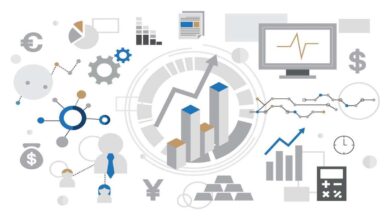
In the complex and interconnected world of supply chain management, achieving transparency in supply chain is paramount. As businesses expand globally, a clear understanding of the flow of goods and information becomes critical. This article delves into various strategies to enhance supply chain visibility and transparency, covering everything from definitions to the role of technology and collaborative platforms.
Clear Definition of Visibility and Transparency
To improve supply chain visibility and transparency, it’s crucial to establish a clear understanding of these terms. Supply chain visibility refers to tracking and monitoring products as they move through various stages of the supply chain. On the other hand, transparency involves making this information accessible and understandable to all stakeholders.
In essence, visibility provides real-time information on the location and status of goods, while transparency ensures that this information is available to all relevant parties. Achieving both requires a concerted effort and the implementation of specific strategies.
Technology Integration
Technology plays a pivotal role in transforming supply chain operations. Integration of advanced technologies facilitates real-time monitoring and data collection. Internet of Things (IoT) devices, for instance, can be embedded in products and transportation equipment to update their location and condition continuously. This enhances visibility and allows for the proactive management of potential disruptions.
Role of Technology in Enhancing Visibility and Transparency
With its decentralized and secure nature, blockchain technology ensures an immutable record of transactions across the supply chain applications. This enhances transparency by reducing the risk of fraud and builds trust among stakeholders.
Data analytics, another technological cornerstone, enables the interpretation of vast amounts of data generated throughout the supply chain. This, in turn, provides valuable insights into patterns, trends, and areas for improvement.
Tools for Real-Time Insights
IoT, blockchain, and data analytics form a powerful trio, collaborating seamlessly to provide real-time insights into the supply chain. IoT devices actively generate data on the movement and condition of goods, ensuring a constant stream of information.
Blockchain technology steps in to secure and maintain the integrity of this data, creating a tamper-resistant record. Finally, data analytics interprets this wealth of information into actionable insights.
When these tools are integrated seamlessly, they forge a robust system that empowers businesses to make prompt, well-informed decisions, ultimately enhancing efficiency and responsiveness across the supply chain.
Collaborative Platforms
To enhance supply chain visibility and transparency, collaboration among stakeholders is paramount. Collaborative platforms, typically fueled by cloud-based supply chain transparency solutions, play a pivotal role by offering a centralized space for real-time data sharing. This encompasses crucial inventory levels, order statuses, and transportation updates.
Importance of Collaborative Platforms for Stakeholders
These platforms break down information silos that often hinder communication and cooperation among different entities in the supply chain. Collaborative transportation platform promote a cohesive and informed ecosystem by ensuring that every stakeholder has access to the same information simultaneously. This facilitates smoother operations and significantly contributes to overall visibility and transparency. In essence, these platforms act as bridges, connecting various supply chain elements and fostering a culture of shared knowledge and collaboration.
Data Standardization
The absence of standardized data poses a significant hurdle in achieving visibility and transparency within the supply chain. Different stakeholders using diverse formats and standards for recording and sharing information create confusion and inefficiencies. Standardizing data across the supply chain becomes crucial as it establishes a universal language.
Need for Standardized Data Across the Supply Chain
Like a shared code, this common language enables seamless communication and understanding among different entities. By fostering a standardized approach to data, businesses can eliminate the barriers created by varied formats, promoting a more streamlined and efficient exchange of information. In essence, data standardization acts as the linchpin for enhancing overall visibility within the supply chain.
Benefits of Consistent and Interoperable Data
Consistent and interoperable data play a pivotal role in enhancing supply chain efficiency. These standardized data practices minimize errors and reduce delays by streamlining communication across diverse systems and stakeholders.
The seamless integration of cutting-edge technologies, such as IoT devices, blockchain, and data analytics, is made possible through standardized data. This harmonious collaboration ensures that information flows smoothly, enabling these advanced supply chain transparency tool to work together.
The result is the delivery of precise and timely insights throughout the supply chain, contributing to improved decision-making and overall operational excellence.
Risk Identification and Mitigation
A key advantage of enhanced visibility and transparency is the ability to identify and mitigate risks effectively. Real-time data on the movement of goods allows businesses to anticipate and respond to disruptions. Whether it’s a delay in transportation, a sudden increase in demand, or a supplier issue, having visibility enables proactive decision-making.
Additionally, transparency in the chain logistics software helps build resilience. When all stakeholders are aware of potential risks, they can collectively work towards developing strategies to mitigate these risks. This collaborative approach ensures a more robust and agile supply chain.
Supplier Collaboration
Suppliers are integral to the supply chain, and collaboration is essential for achieving transparency.
Here are strategies for fostering collaboration with suppliers in the context of achieving supply chain visibility and transparency:
Open Communication Channels:
- Establish regular and open lines of communication with suppliers.
- Use collaborative platforms for real-time communication.
Joint Planning and Forecasting:
- Collaborate on demand forecasting to align production and supply chain activities.
- Share relevant market insights to improve accuracy.
Technology Integration:
- Invest in technologies that enable seamless data sharing and integration.
- Implement systems like Electronic Data Interchange (EDI) for automated transactions.
Supplier Education and Training:
- Provide training on the importance of visibility and transparency.
- Share best practices and industry standards.
Mutual Goals and KPIs:
- Define and align key performance indicators (KPIs) that reflect shared goals.
- Regularly review and assess performance against these metrics.
In conclusion, the journey toward enhanced supply chain visibility and transparency involves a multifaceted approach. From leveraging cutting-edge technologies to fostering collaboration and standardizing data, businesses must adopt a holistic strategy to ensure the seamless flow of information across the supply chain.
By doing so, they mitigate risks, improve decision-making, and pave the way for a more resilient and efficient supply chain ecosystem.



